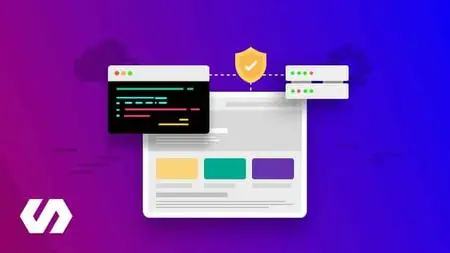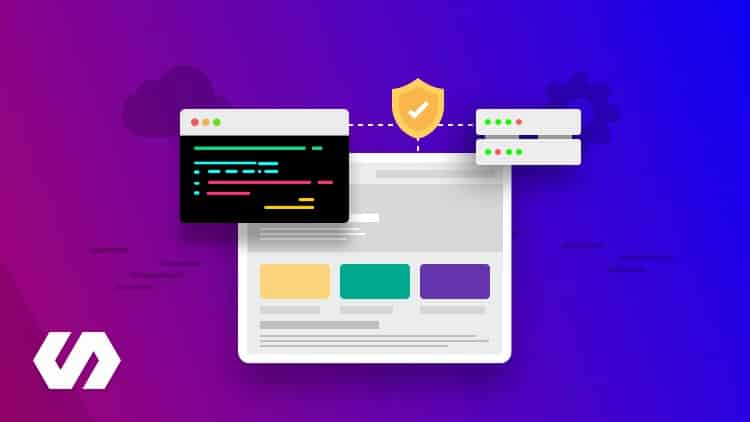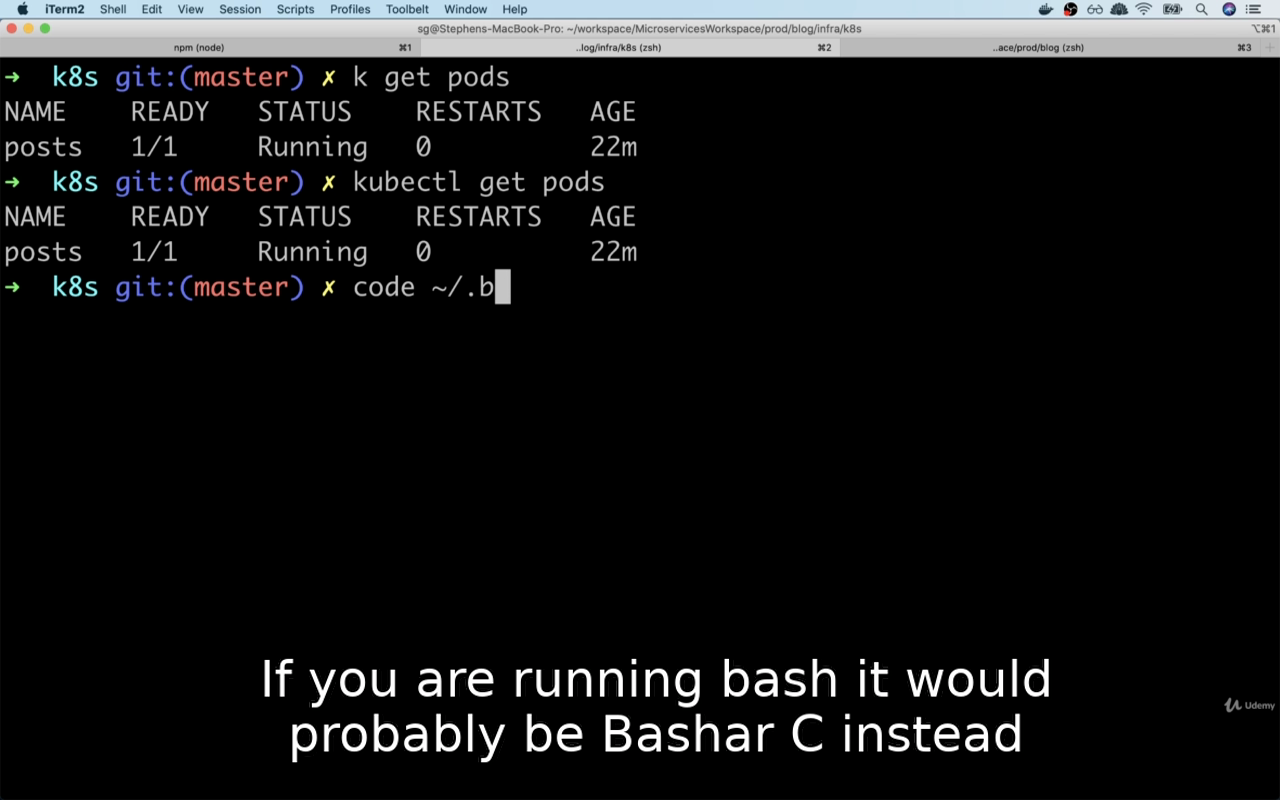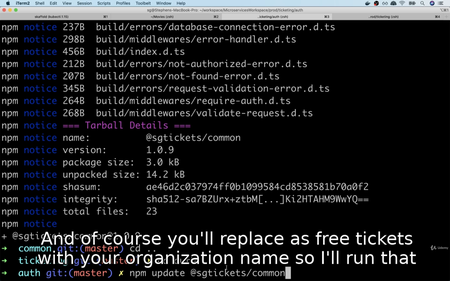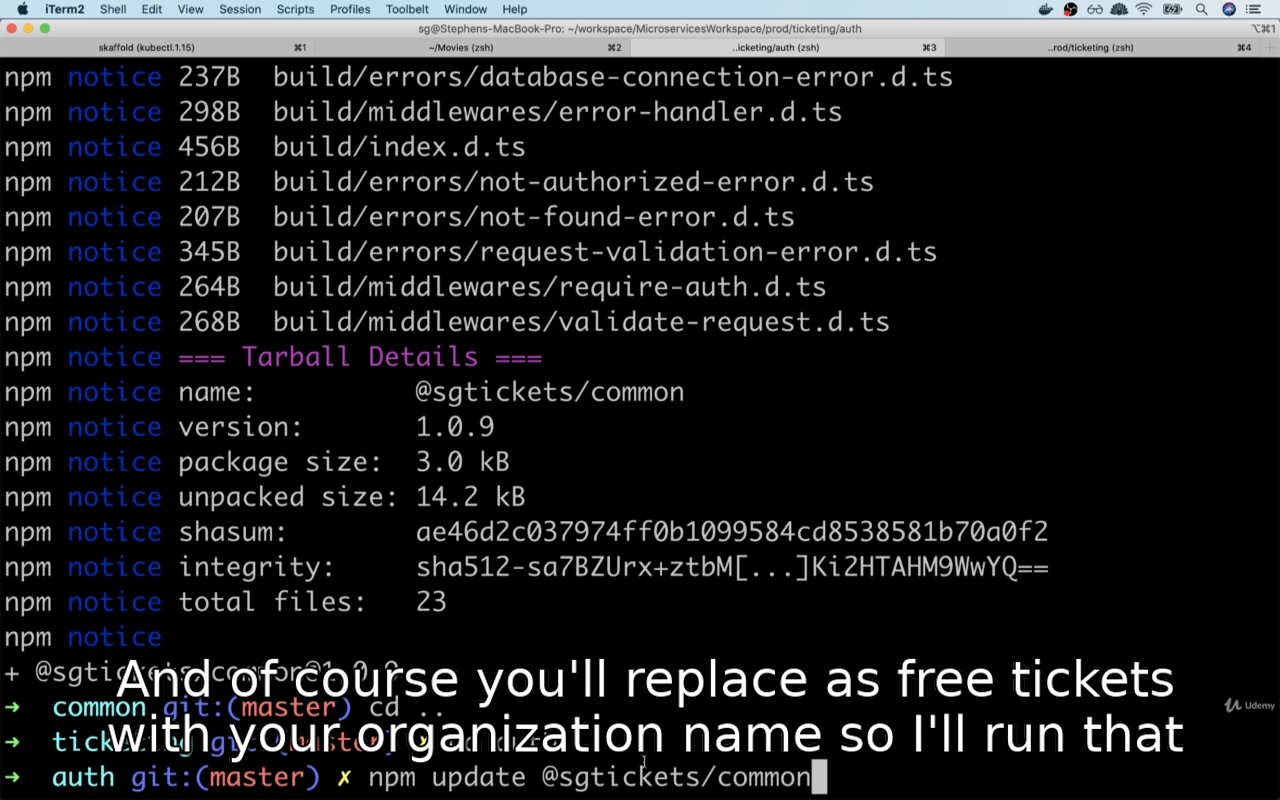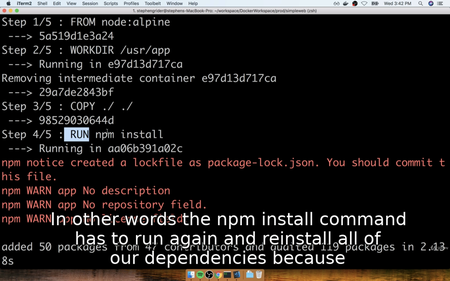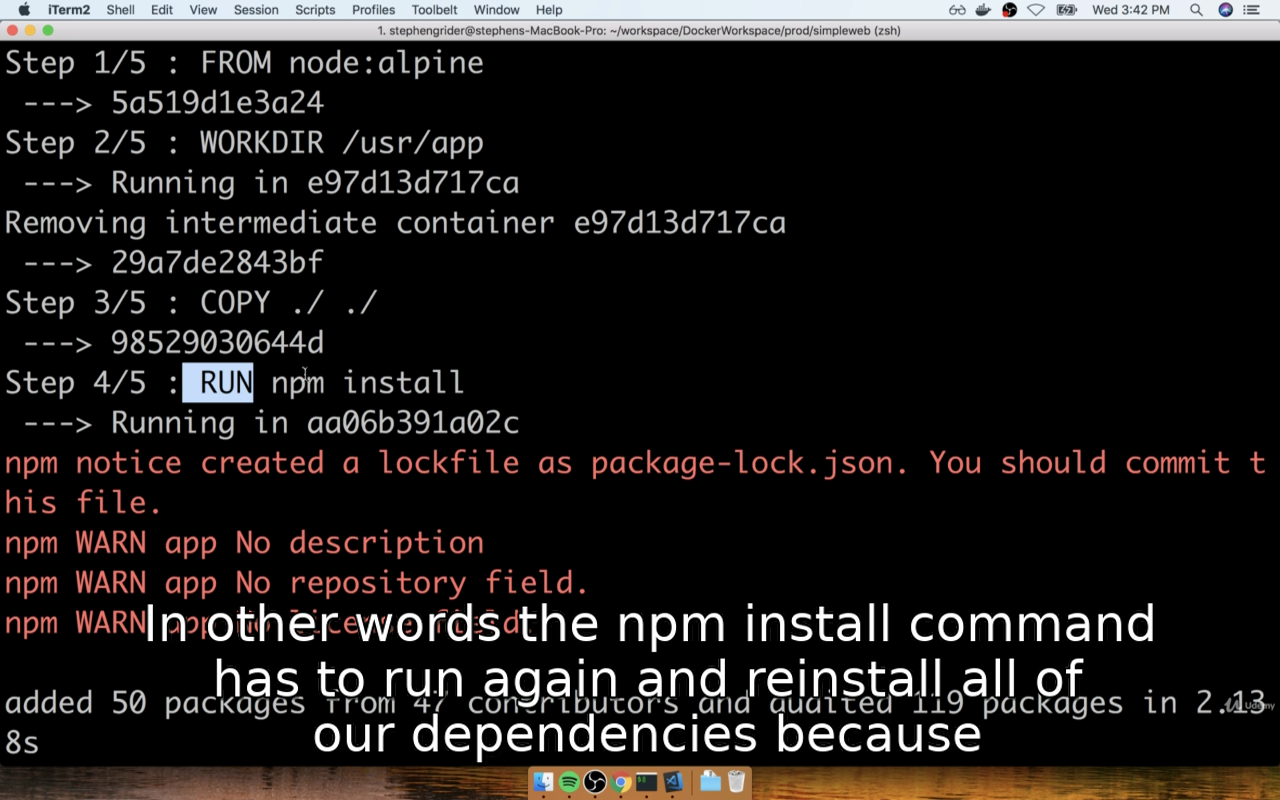Microservices with Node JS and React (10/2020)
WEBRip | English | MP4 + Project Files | 1280 x 720 | AVC ~814 kbps | 30 fps
AAC | 128 Kbps | 44.1 KHz | 2 channels | Subs: English (.srt) | ~54 hours | 18.15 GB
Genre: eLearning Video / Development, Programming
WEBRip | English | MP4 + Project Files | 1280 x 720 | AVC ~814 kbps | 30 fps
AAC | 128 Kbps | 44.1 KHz | 2 channels | Subs: English (.srt) | ~54 hours | 18.15 GB
Genre: eLearning Video / Development, Programming
Build, deploy, and scale an E-Commerce app using Microservices built with Node, React, Docker and KubernetesWhat you'll learn
Architect large, scalable apps using a collection of microservices
Deploy a multi-service app to the cloud with Docker and Kubernetes
Solve concurrency issues in a distributed systems environment
Leverage your Javascript skills to build a complex web app
Build a Server-Side Rendered React App to render data from your microservices
Understand how enterprise companies design their infrastructure
Share reusable code between multiple Express servers using custom NPM packages
Write comprehensive tests to ensure each service works as designed
Communicate data between services using a lightning-fast event bus
Write nothing but production-level code. No cutting corners!
Requirements
Basic knowledge of Javascript and Express is required
Knowledge of React is good, but not needed
You must be familiar and comfortable with the command line
Description
Event-Based Architecture? Covered! Server side rendering with React? Yep. Scalable, production-ready code? Its here!
Microservices are the number one solution for building and scaling out apps that are intended to grow. Just one little issue: there are few resources online that delve into the most complex and nasty issues around them! I built this course to fix that. This course tackles every major issues around microservices head on. From challenges with data replication to confusing unordered event streams, every major challenge of building microservices is covered.
Beyond focusing on the basics of microservices, this course is a perfect introduction to the world of full-stack development. You will work all the way from the frontend, assembling a React app using Hooks, to the backend, including database design and deployment strategies. Every step along the way is covered in tremendous detail, with ample diagrams to ensure every step is crystal clear.
Many other resources show only the easiest, simplest apps written with microservices. This course does the opposite: we focus on the most challenging aspects of microservices, challenges that you will likely encounter every single day. You will see these difficulties first hand, then solve them with easy-to-understand strategies.
How This Course Works
This course doesn't focus on using an off-the-shelf microservices framework. Many exist, but they hide the inner workings and challenges of microservices away from you. Instead, we will be using a minimal number of libraries, and write as much custom code as possible. This will expose you to challenging problems and clever solutions when handling subjects like async events!
What Technology You'll Use
Because we are building a full stack application, we will use a variety of technologies. On the frontend, we'll use React and Next JS to present content to users. Each service is created using Node and Express. Data for each service is held in either a Mongo database or Redis. The entire app is deployed and runs in Docker containers executed in a Kubernetes cluster. Finally, almost all of the code in this course is written with Typescript.
This is a scary list of technologies! Not familiar with some of these? No problem! The course is built assuming that you only know the basics of Javascript and Express. No other knowledge is needed - you will learn everything you need to know.
What You'll Be Able to Do
By the time you complete this course, you will be able to:
Architect a multi-service application
Determine whether your app is a good fit for a microservices approach
Understand and solve the challenges in async, event-based communication between services
Use Docker and Kubernetes to deploy a multi-service app to any cloud provider
Organize and enhance the reusability of code in large projects
What You'll Learn
An absolute incredible number of topics are covered in this course. Here is a partial list of what you'll do:
Practice patterns to create scalable microservices for a variety of app domains
Build a Server-Side-Rendered React app using Hooks and Next JS
Write a custom implementation of an event bus
Optionally, run a development environment through a cloud provider
Guarantee consistently structured responses from your different API's
See best practices in communication between different services
Configure and scale your services using Kubernetes Deployments
Document and enforce structure constraints on events shared across microservices
Limit access to your APIs using JWT-based authentication
And much more!
This is the course I wish I had when I was learning microservices. A course that focuses on the hardest parts, gives clear explanations, and discusses the pros and cons of different design options. Sign up today and join me in mastering microservices!
Who this course is for:
Javascript engineers looking to build large, scalable applications
This course is *not* designed for sysadmins focused on infrastructure deployment
also You can find my other helpful Programming-posts
(if old file-links don't show activity, try copy-paste them to the address bar)
General
Complete name : 09-04 Solving Issues with Option 2.mp4
Format : MPEG-4
Format profile : Base Media
Codec ID : isom (isom/iso2/avc1/mp41)
File size : 57.4 MiB
Duration : 8 min 26 s
Overall bit rate : 951 kb/s
Writing application : Lavf58.12.100
Video
ID : 1
Format : AVC
Format/Info : Advanced Video Codec
Format profile : Main@L3.1
Format settings : CABAC / 4 Ref Frames
Format settings, CABAC : Yes
Format settings, RefFrames : 4 frames
Codec ID : avc1
Codec ID/Info : Advanced Video Coding
Duration : 8 min 26 s
Bit rate : 814 kb/s
Nominal bit rate : 3 000 kb/s
Width : 1 280 pixels
Height : 720 pixels
Display aspect ratio : 16:10
Frame rate mode : Constant
Frame rate : 30.000 FPS
Color space : YUV
Chroma subsampling : 4:2:0
Bit depth : 8 bits
Scan type : Progressive
Bits/(Pixel*Frame) : 0.029
Stream size : 49.1 MiB (86%)
Writing library : x264 core 148
Encoding settings : cabac=1 / ref=3 / deblock=1:0:0 / analyse=0x1:0x111 / me=umh / subme=6 / psy=1 / psy_rd=1.00:0.00 / mixed_ref=1 / me_range=16 / chroma_me=1 / trellis=1 / 8x8dct=0 / cqm=0 / deadzone=21,11 / fast_pskip=1 / chroma_qp_offset=-2 / threads=22 / lookahead_threads=3 / sliced_threads=0 / nr=0 / decimate=1 / interlaced=0 / bluray_compat=0 / constrained_intra=0 / bframes=3 / b_pyramid=2 / b_adapt=1 / b_bias=0 / direct=1 / weightb=1 / open_gop=0 / weightp=2 / keyint=60 / keyint_min=6 / scenecut=0 / intra_refresh=0 / rc_lookahead=60 / rc=cbr / mbtree=1 / bitrate=3000 / ratetol=1.0 / qcomp=0.60 / qpmin=0 / qpmax=69 / qpstep=4 / vbv_maxrate=3000 / vbv_bufsize=6000 / nal_hrd=none / filler=0 / ip_ratio=1.40 / aq=1:1.00
Audio
ID : 2
Format : AAC
Format/Info : Advanced Audio Codec
Format profile : LC
Codec ID : mp4a-40-2
Duration : 8 min 26 s
Bit rate mode : Constant
Bit rate : 128 kb/s
Channel(s) : 2 channels
Channel positions : Front: L R
Sampling rate : 44.1 kHz
Frame rate : 43.066 FPS (1024 SPF)
Compression mode : Lossy
Stream size : 7.72 MiB (13%)
Default : Yes
Alternate group : 1
Complete name : 09-04 Solving Issues with Option 2.mp4
Format : MPEG-4
Format profile : Base Media
Codec ID : isom (isom/iso2/avc1/mp41)
File size : 57.4 MiB
Duration : 8 min 26 s
Overall bit rate : 951 kb/s
Writing application : Lavf58.12.100
Video
ID : 1
Format : AVC
Format/Info : Advanced Video Codec
Format profile : Main@L3.1
Format settings : CABAC / 4 Ref Frames
Format settings, CABAC : Yes
Format settings, RefFrames : 4 frames
Codec ID : avc1
Codec ID/Info : Advanced Video Coding
Duration : 8 min 26 s
Bit rate : 814 kb/s
Nominal bit rate : 3 000 kb/s
Width : 1 280 pixels
Height : 720 pixels
Display aspect ratio : 16:10
Frame rate mode : Constant
Frame rate : 30.000 FPS
Color space : YUV
Chroma subsampling : 4:2:0
Bit depth : 8 bits
Scan type : Progressive
Bits/(Pixel*Frame) : 0.029
Stream size : 49.1 MiB (86%)
Writing library : x264 core 148
Encoding settings : cabac=1 / ref=3 / deblock=1:0:0 / analyse=0x1:0x111 / me=umh / subme=6 / psy=1 / psy_rd=1.00:0.00 / mixed_ref=1 / me_range=16 / chroma_me=1 / trellis=1 / 8x8dct=0 / cqm=0 / deadzone=21,11 / fast_pskip=1 / chroma_qp_offset=-2 / threads=22 / lookahead_threads=3 / sliced_threads=0 / nr=0 / decimate=1 / interlaced=0 / bluray_compat=0 / constrained_intra=0 / bframes=3 / b_pyramid=2 / b_adapt=1 / b_bias=0 / direct=1 / weightb=1 / open_gop=0 / weightp=2 / keyint=60 / keyint_min=6 / scenecut=0 / intra_refresh=0 / rc_lookahead=60 / rc=cbr / mbtree=1 / bitrate=3000 / ratetol=1.0 / qcomp=0.60 / qpmin=0 / qpmax=69 / qpstep=4 / vbv_maxrate=3000 / vbv_bufsize=6000 / nal_hrd=none / filler=0 / ip_ratio=1.40 / aq=1:1.00
Audio
ID : 2
Format : AAC
Format/Info : Advanced Audio Codec
Format profile : LC
Codec ID : mp4a-40-2
Duration : 8 min 26 s
Bit rate mode : Constant
Bit rate : 128 kb/s
Channel(s) : 2 channels
Channel positions : Front: L R
Sampling rate : 44.1 kHz
Frame rate : 43.066 FPS (1024 SPF)
Compression mode : Lossy
Stream size : 7.72 MiB (13%)
Default : Yes
Alternate group : 1
Screenshots
✅ Exclusive eLearning Videos ParRus-blog ← add to bookmarks
Feel free to contact me PM
when links are dead or want any repost
Feel free to contact me PM
when links are dead or want any repost


